Prism
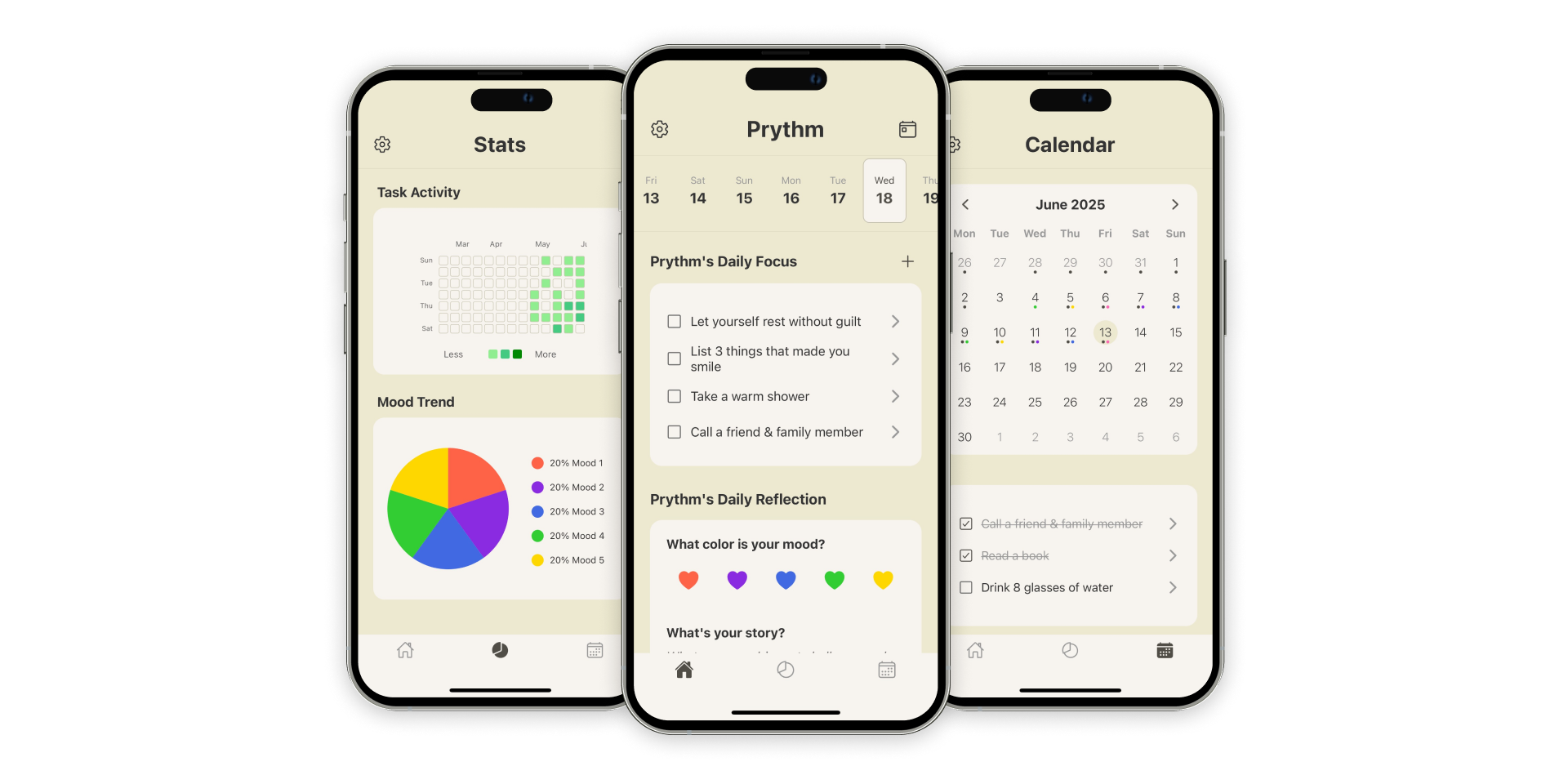
Prism is a Self-help Todo app for users seeking a calming supportive approach to daily routines.
The Challenge
- Problem: Many habit trackers prioritize productivity and strict metrics, causing feelings of guilt or burnout.
- Situation: Users wanted a non-judgmental app that could work offline and encourage healthy daily habits.
- Necessary: Build a unique, minimalistic app focusing on emotional well-being.
The Goal
- Objectives: Create a distraction-free design with soft colors and calming UX flows.
- Metrics: Track retention, positive sentiment, and user engagement.
- Impact: Help users feel supported while building daily routines.
User Research
Goal
Understand how burnout affects user's app interactions.
Methods
- User surveys
- 1:1 interviews
Key Insights
- Users feel anxious when apps are too gamified.
- Privacy and offline access were critical.
- Simplicity improves long-term engagement.
Persona: Emma, The Caring Mom

A caring mother in her 30s who puts her kids first, neglecting her own needs and health.
Goal
Take care of herself while caring for her kids.
Pain Point
Always puts family first, feels tired, often sick, guilty about self-care.
Motivation
Stay healthy and happy to be present for her children.
Quote
I love my kids, but I'm always exhausted. I wish I had time for me.
Persona: Thomas, The Driven Professional

A driven man in his 50s who overworks and risks burnout despite his dedication to fitness and career.
Goal
Find balance between work, fitness, and rest.
Pain Point
Works too much, pushes himself hard, burned out, struggles to relax.
Motivation
Wants a healthier lifestyle and mental balance.
Quote
I push myself to succeed, but I'm burning out. I need a break.
User Journey
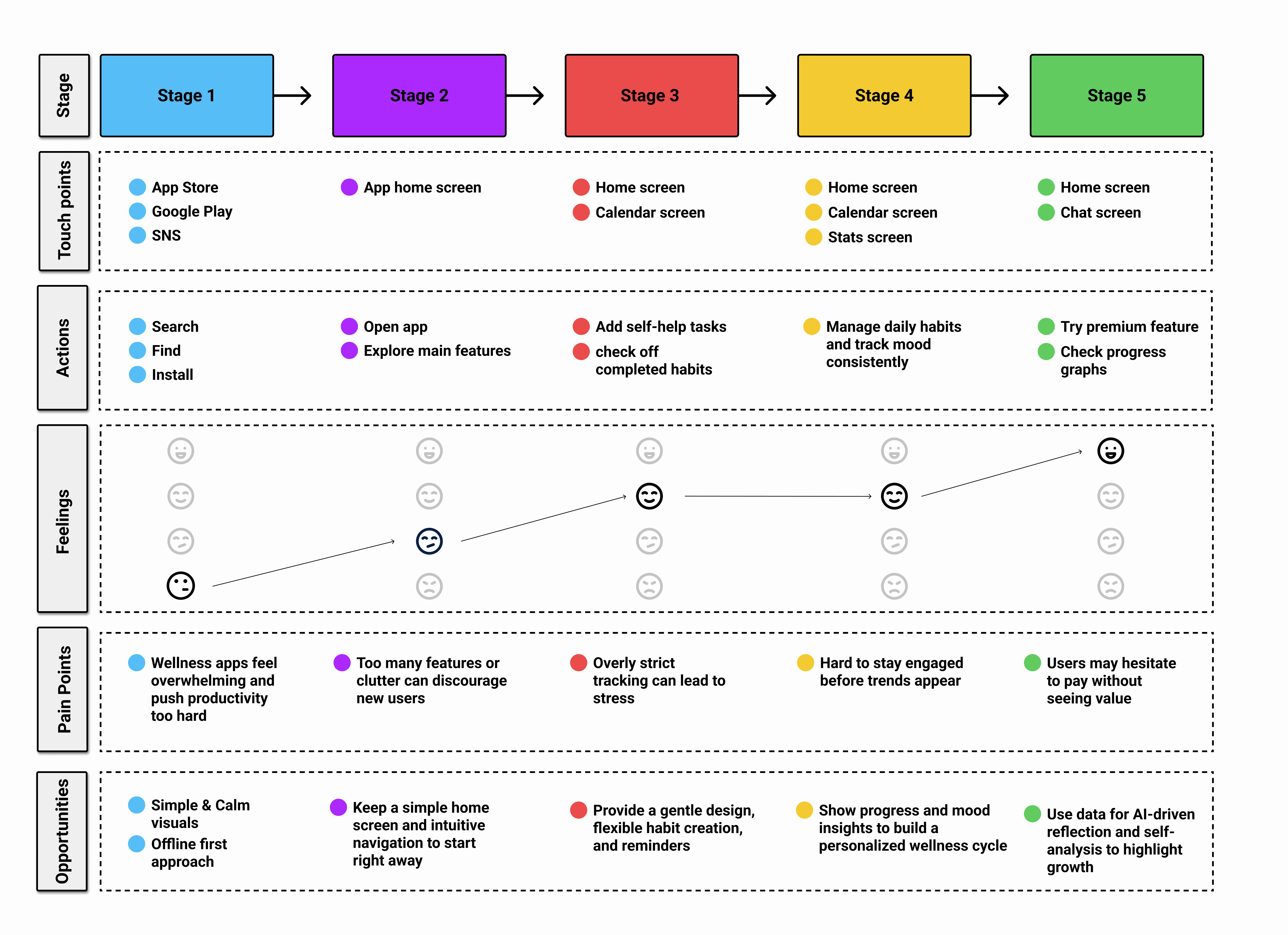
Design & Development
Prism was designed with mental health expertise and insights from my psychiatric hospital training, prioritizing user well-being over trends.
Tech Stack & Tools
- Tech Stack: React Native (Expo), Supabase, RevenueCat
- Tools: Figma, GitHub, Visual Studio Code
Key Requirements
- Calming Design: Non-Judgmental visuals and simple layouts to create a safe space for users.
- Instant Start, No Onboarding: Allow users to add tasks or track mood immediately, reducing setup friction.
- Offline-First & Privacy-Focused: Enable functionality offline and protect sensitive mental health data.
- Mood & Habit Tracking Visualization: Show graphs of mood trends and task completion to promote self-awareness.
- AI-Powered Reflection (Premium Feature): Use accumulated data to deliver personalized insights and mental wellness tips.
Release Journey
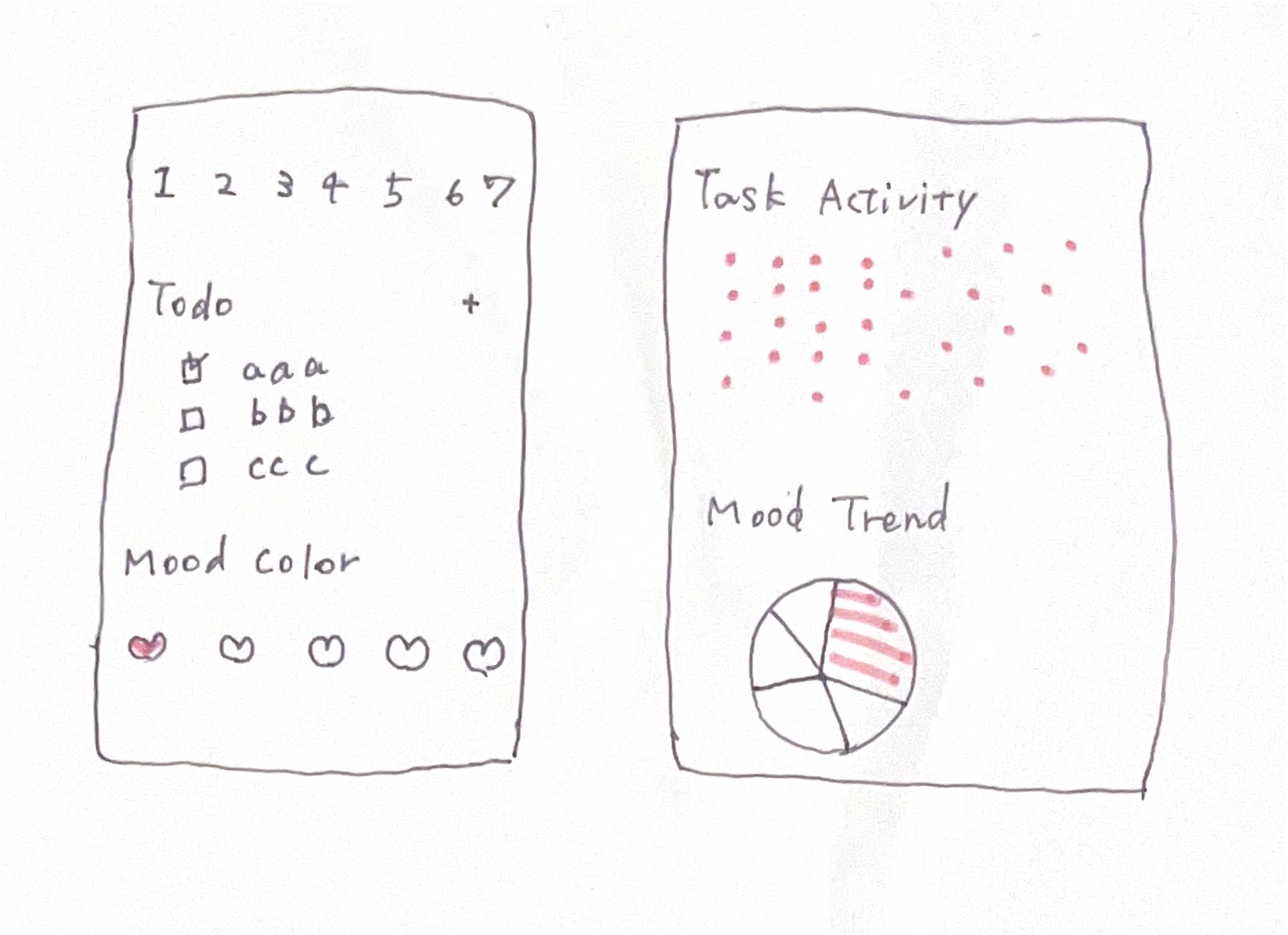
Market research showed a UX trend: collecting detailed onboarding surveys, scoring user's mental state, and showcasing progress through numbers. However, I intentionally chose no onboarding and no numeric scoring to reduce emotional burden.
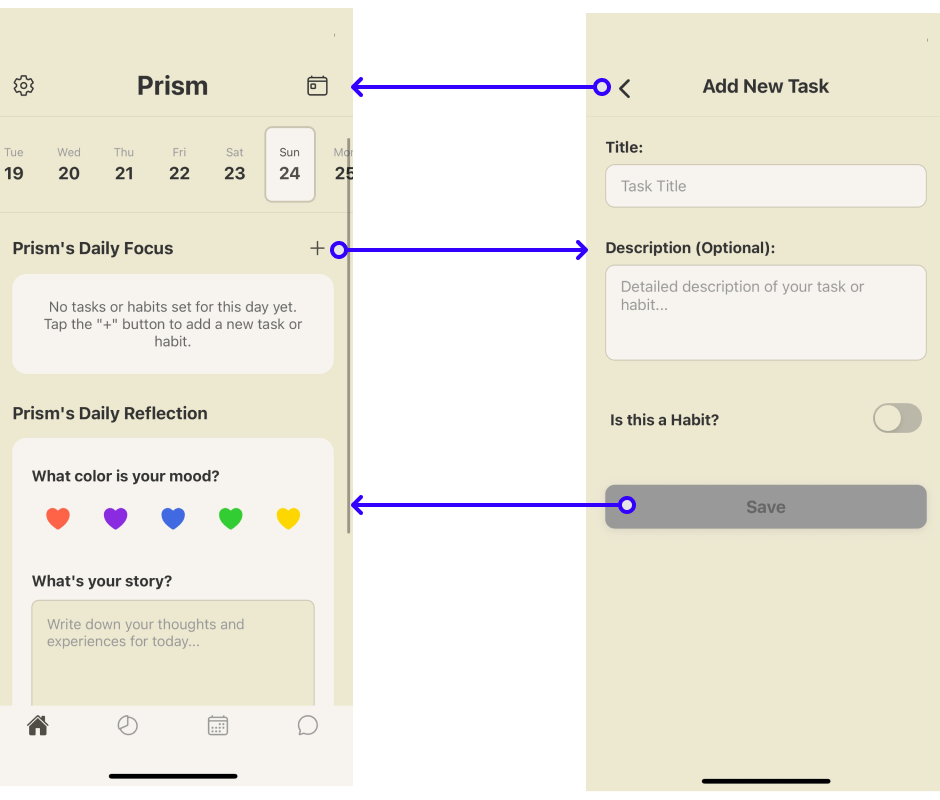
I simplified the UX by removing the onboarding flow, focusing on a minimalist, streamlined experience.
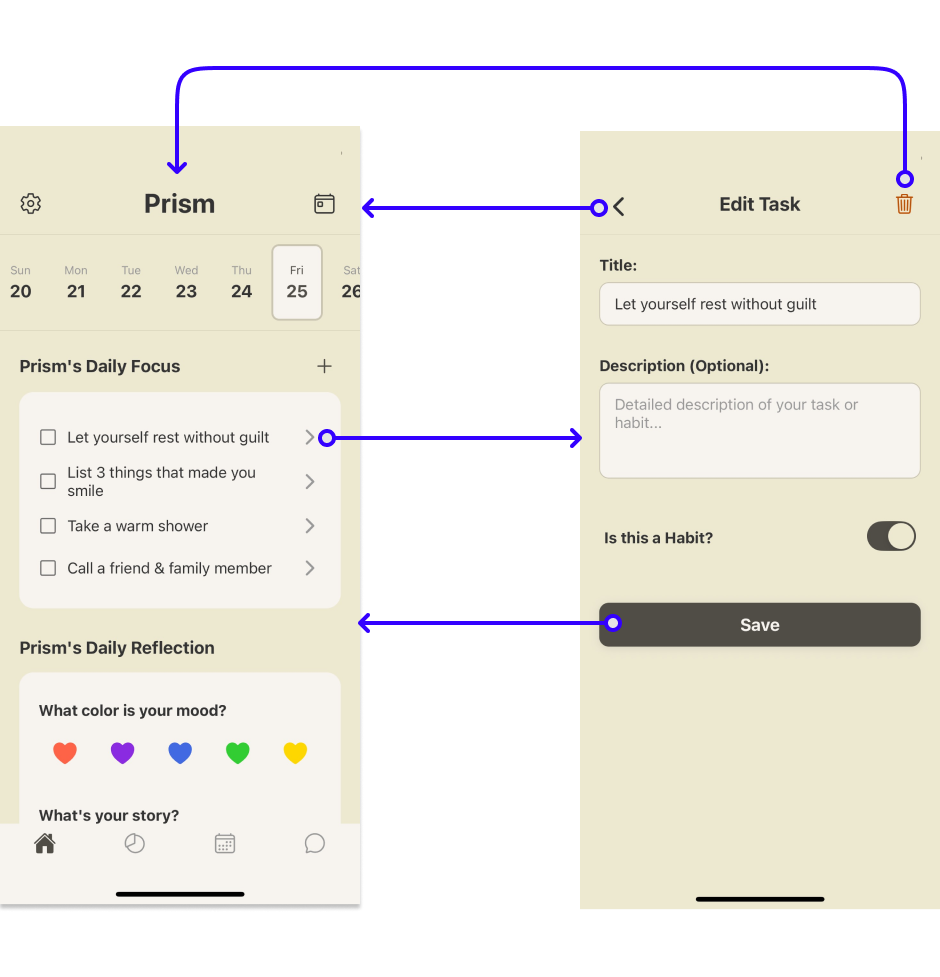
I also eliminated gestures like long-press and swipe, designing the interface so that users interact through simple icon taps.
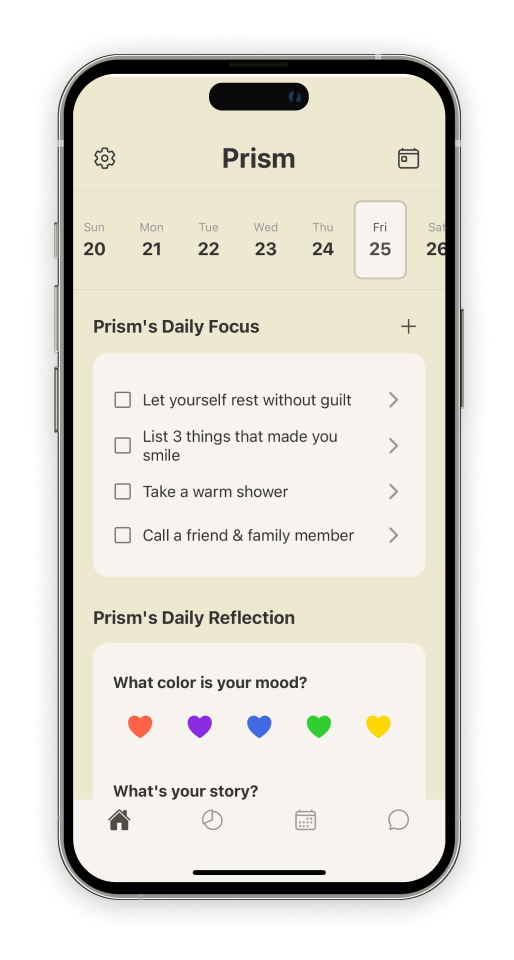
Mood is expressed through colors instead of words, reflecting that emotions are complex and cannot always be captured by labels like “angry” , “sad” and “happy”. This abstract approach creates a gentle, judgment-free experience.
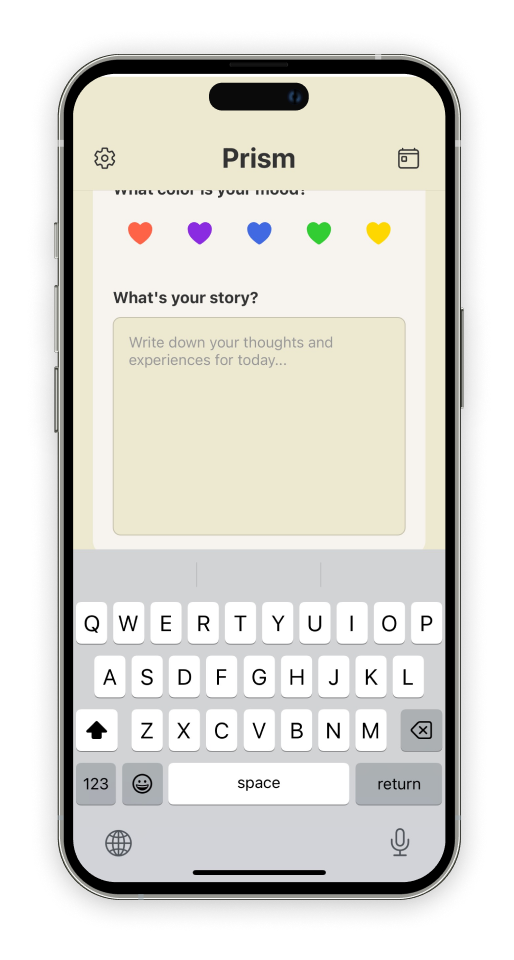
For the journaling feature, I used React Native's KeyboardAvoidingView to deliver an excellent user experience. This ensures that, on a wide range of devices, the keyboard never hides the text input, allowing users to type comfortably.
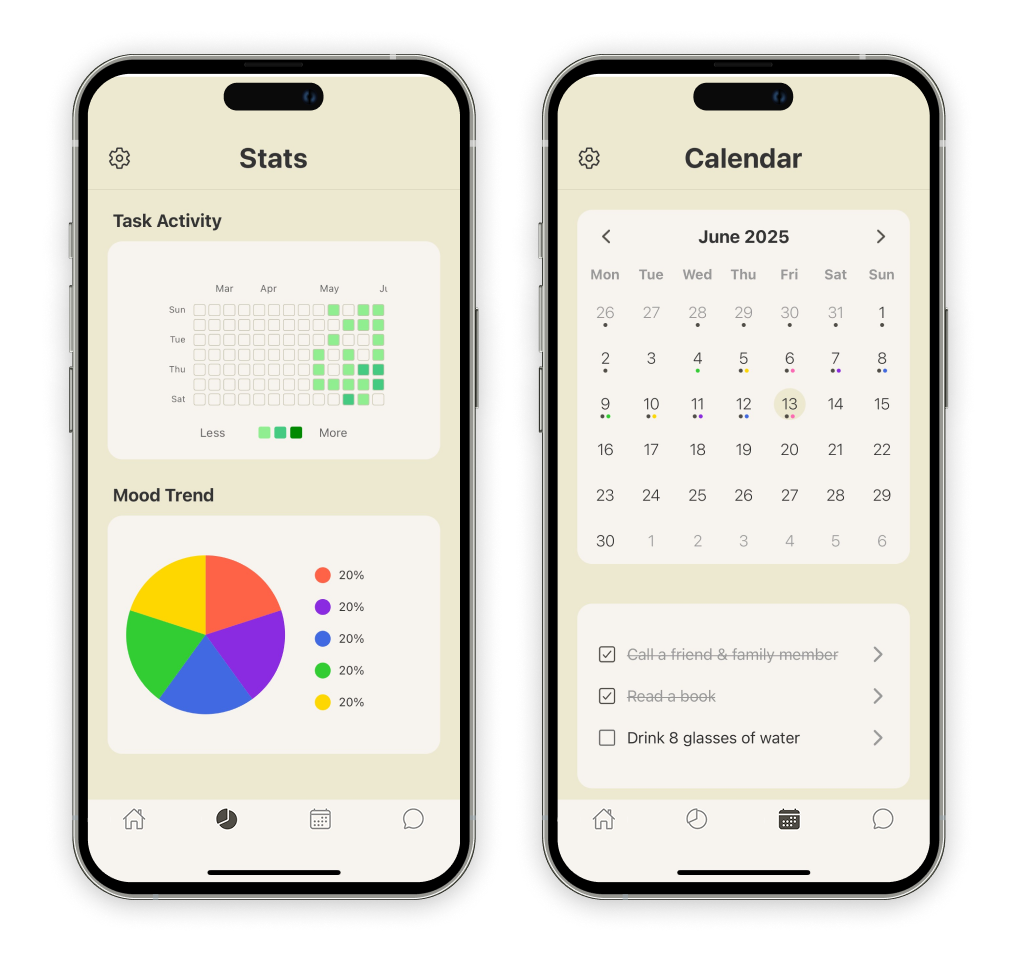
The Stats screen uses a GitHub-inspired heatmap to visualize task activity and mental patterns. Rather than rewarding darker colors, it helps users find a personal balance, supporting self-awareness and preventing burnout. I also implemented the Calendar screen to visualize activity on a monthly basis.
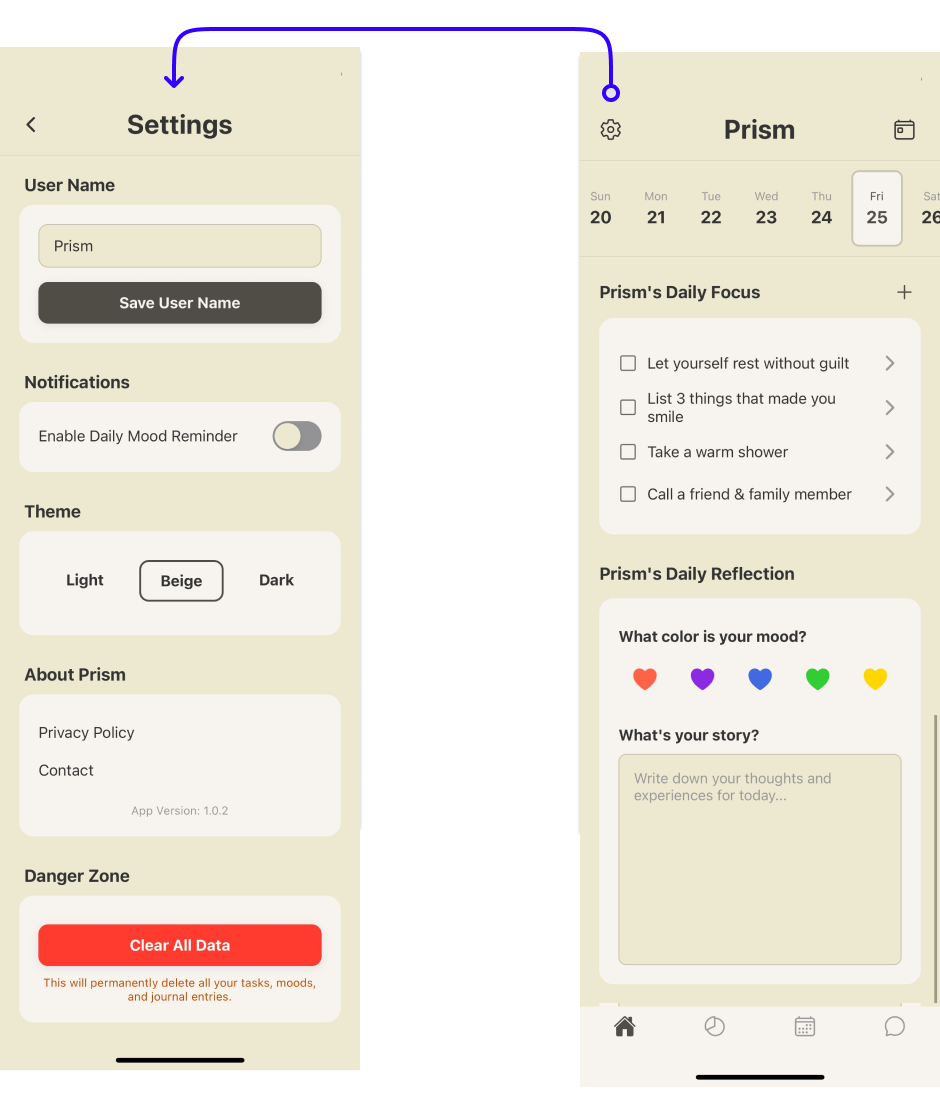
All app data is stored locally on the device, ensuring maximum privacy as developers cannot access it. Users can also delete their data at any time.
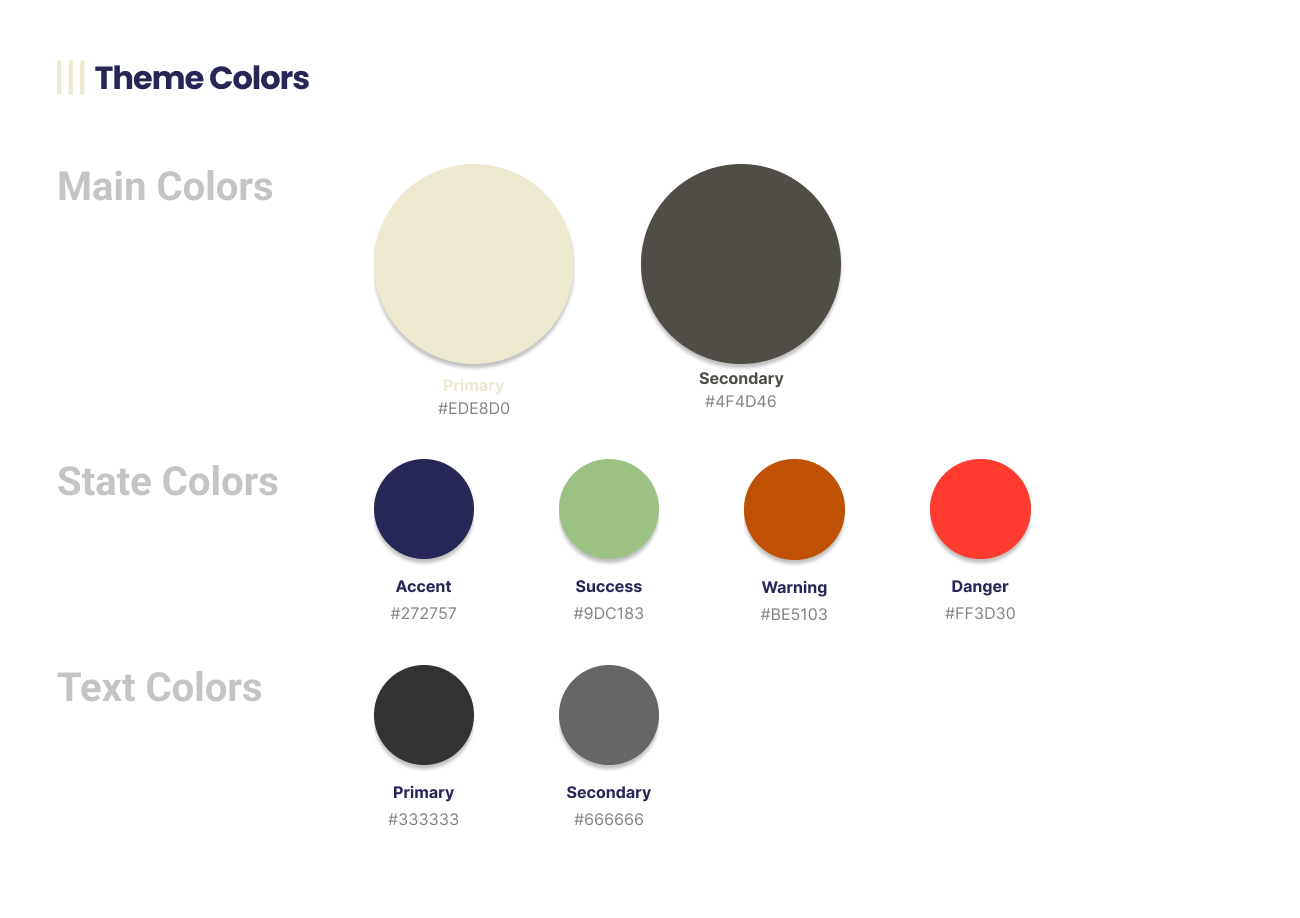
I created three themes main, light, and dark using Beige as the main color. Beige symbolizes simplicity, calmness, and neutrality, perfectly reflecting the image of Prism. It is also a trending color, making it both relevant and visually appealing.
Icon
The icon symbolizes light representing user's emotions, guiding them forward. The app was initially named “Lune” (moon-inspired), but I renamed it “Prism” to better align with its concept. The design also takes into account Apple's Liquid Glass aesthetic, introduced around the same period.
User Flow
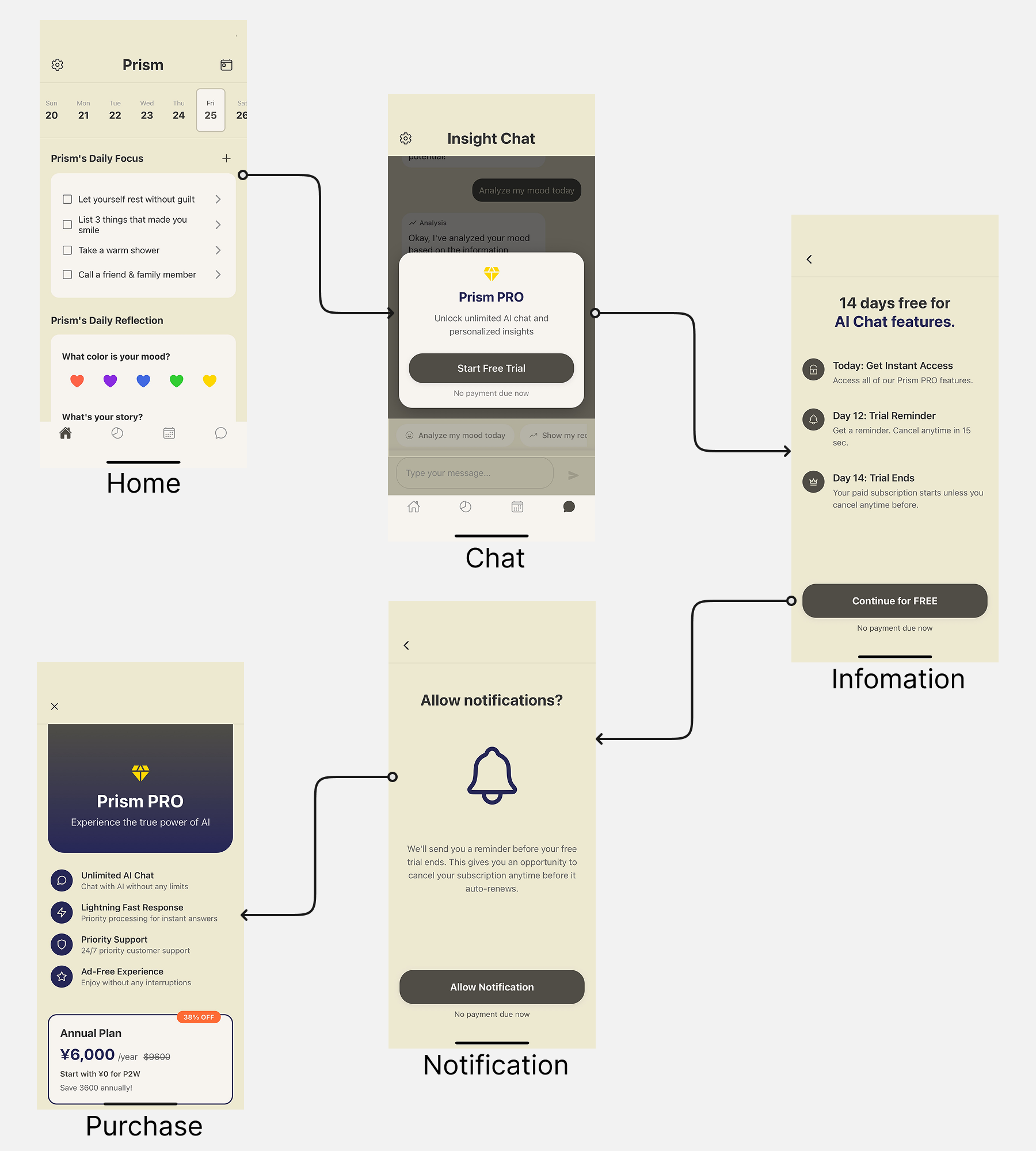
Users log daily activities on the Home screen and reflect with AI insights in the Chat screen, helping boost self-esteem. A two-week trial with reminders prevents auto-renewals, and a clear “No payment due now” message keeps the experience stress-free.
The Solution
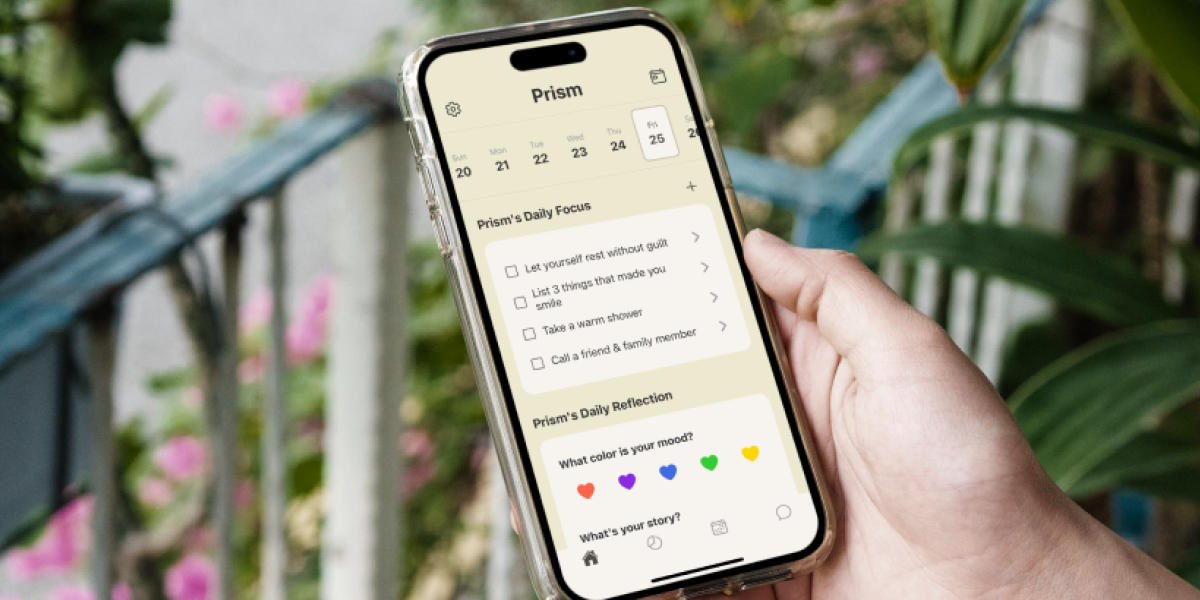
Prism was developed with eight screens. App Store/Google Play screenshots were optimized using ASO and SEO principles, achieving over 500 impressions per month without any paid advertising. Try it for free!
The Result
- Outcomes: Daily active users continue to rise, showing strong engagement. ASO improvements increased CVR by up to 70%, and MRR keeps growing. Careful coding has maintained a 0% crash rate.
- Solved Challenge: Successfully delivered a non-judgmental, privacy first habit tracker that promotes emotional well-being and sustainable daily routines.
- Impact: Demonstrated that emotional UX principles gentle colors, minimal interactions, and offline first privacy significantly improve user retention and satisfaction in wellness apps.
Feedback & Iteration
- Feedback Collected: Gathered through in-app analytics, user surveys, and online meetings.
- Insights Gained: Users appreciated the calm design, offline functionality, and gentle reminders, highlighting the app's ability to reduce anxiety often caused by traditional habit trackers.
- Iterative Improvements: Added theme customization and refined reminder settings based on user feedback.
Learnings
- Key Insights: Designing for emotional well-being requires balancing simplicity with functionality; removing gamification elements increased trust and engagement.
- Challenges Overcome: Implemented seamless offline data storage and syncing while ensuring full privacy protection, which was a technical and UX challenge.
- Next Steps: Plan to integrate AI-driven, privacy-safe reflections to provide deeper insights without overwhelming users.
"Before Prism, I often felt stressed and out of control. Now it helps me relax and feel calm every day."
— Robert

